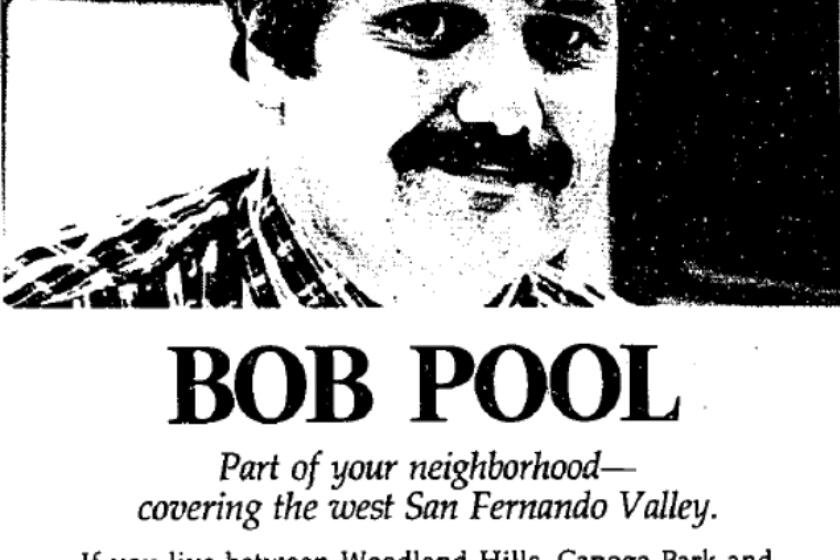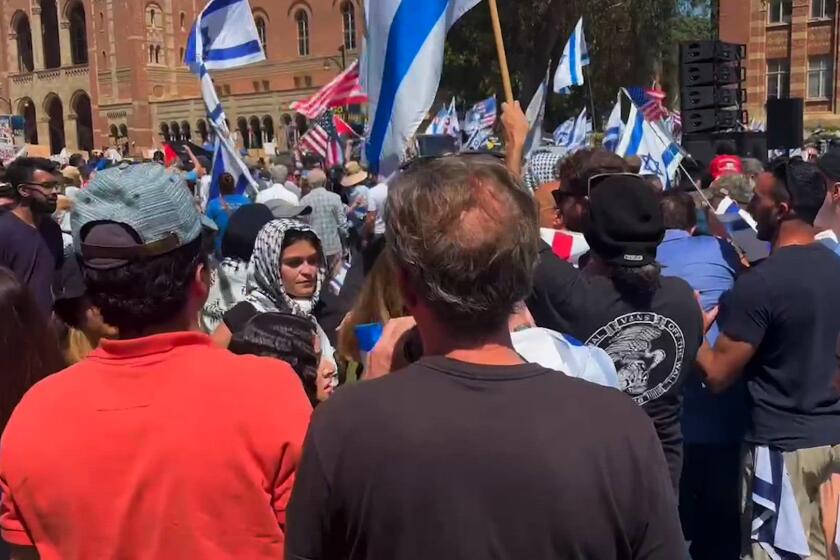Descendant of rancho family seeks to mark historic graves
An unusual crop is sprouting in Ernest Marquez’s backyard in West Hills: nearly two dozen 2-foot-high concrete crosses.
The 90-year-old graphic designer wants to fulfill his long-held dream of creating nearly three dozen grave markers for his family’s 19th century burial ground in Santa Monica Canyon.
“Some time in the past, all the markers were taken or destroyed,” Marquez said. With the exception of stones the family erected to mark the graves of his grandfather and grandmother, “the cemetery has remained empty of any identification of where a grave might be.”
Once part of a large cattle ranch, the Pascual Marquez Family Cemetery stands amid stately trees and pricey houses on winding San Lorenzo Street. The city of Los Angeles has deemed it “extremely historic” for its connection to the region’s early history.
In 1839, the Mexican government granted the area, known as the Rancho Boca de Santa Monica, to two Mexican citizens, Francisco Marquez and Ysidro Reyes. The rancho eventually became parts of Santa Monica and Pacific Palisades.
Not long after Francisco Marquez and his wife, Maria, moved to the canyon, two of their children died in infancy. Marquez buried them in the 1840s within view of the family’s adobe home on what was then a wide-open upper mesa.
In succeeding decades, more people were buried — perhaps 30 other family members, Native American servants and friends, including a dozen people who died of botulism after eating home-canned peaches at a New Year’s Eve gathering to usher in 1910.
A photo from the 1890s shows a few wooden crosses, all of them long gone now. Ernest Marquez’s grandfather Pascual was the last to be buried there, in 1916. Pascual’s wife, Micaela (also spelled Michaela), preceded him in death.
During Pascual’s life, the canyon evolved from wilderness into a popular resort. In the mid-1920s, the Marquez and Reyes families sold the land to Santa Monica Land & Water Co., owned by Robert Gillis. Dorothy Gillis Loomis, his daughter, urged him to protect the cemetery. She commissioned noted architect John Byers to design an adobe wall to surround the burial ground.
Once the parcels were subdivided for houses, the cemetery became landlocked. Marquez family members used a 4-foot-wide easement to gain access.
Marquez, a self-taught historian who has written books about the rancho era, spent several years in court battling neighbors who contended that the easement had been terminated by non-use. In 2005, a Los Angeles County Superior Court judge decided in Marquez’s favor, allowing him to use the easement and maintain the cemetery.
In 2011, neighbors agreed to sell a portion of the land in front of the burial ground at a greatly reduced price. It is now a beautifully landscaped entry to the burial ground, which lies behind a locked gate.
Because burial records were lost or are incomplete, cemetery supporters in 2009 covered the cost of researching the cemetery’s boundaries. Scientists used ground-penetrating radar imaging equipment to find burial sites. Dogs trained to sniff out remains also identified likely locations.
Marquez and his son, Ernesto, are mapping the cemetery based on the data to pinpoint the grave sites so that they can put a 40-pound cross over each one.
“Our historian’scrosses honor thetradition of decorating coastal graves with pottery shards as well as wooden markers,” said Patricia Nettleship, director of La Señora Research Institute, acanyon nonprofitfoundation that raised money to preserve the cemetery. “It will be an extraordinary blessing to have the cemetery marked againwiththe creations of a rancho descendant.”
To make each cross, Marquez pours concrete into a handmade wooden mold. He then decorates the still malleable cross with items that could be associated in some way with his ancestors’ rancho. He has used Mexican tiles, including some made by the famed Malibu Potteries, bought on EBay or supplied by friends. He has scavenged for tree bark. Friends have brought him clam shells from the coast and pebbles from Santa Monica Creek.
One cross shows the imprint of three cattails plucked from the creek. Four rusty horseshoes form a pattern on another.
“I don’t want these to look like they came from a manufacturer,” Marquez said while showing visitors around his backyard.
He plans to mark the mass grave of those who died from the tainted peaches with rocks embellished with crosses or, in one case, a bird made of tile and leaded glass.
Set for now in his garden amid fallen oak leaves, the collection of crosses looks like a found-object art installation reminiscent, albeit on a much smaller scale, of Simon Rodia’s Watts Towers.
After almost a century of living, Marquez is content to move at his own pace. But he is determined to finish the job — before the time comes for his children to scatter his own cremated remains in the cemetery.
“There’s no evidence that the rancho period ever existed,” he said. “There’s nothing left that you can look at or touch to remind you. I don’t want my ancestors to be forgotten.”
Twitter: @MarthaGroves
More to Read
Start your day right
Sign up for Essential California for news, features and recommendations from the L.A. Times and beyond in your inbox six days a week.
You may occasionally receive promotional content from the Los Angeles Times.







